You inhabit a studio apartment, a compact space that holds the promise of both cozy living and design challenges. Forget the notion that small means sacrificing style or function. Your studio is a dynamic canvas, a unique opportunity to cultivate a highly personalized, efficient, and beautiful home. As an interior stylist, I see these spaces not as limitations, but as inspiring puzzles waiting for creative solutions. We aim for more than just putting things away; we seek to transform how your home feels and functions, making every square foot serve a purpose while reflecting your personal aesthetic.
Maximizing space without sacrificing style involves a deliberate approach to layout, furniture selection, and visual perception. It requires understanding how to make your home work harder for you, ensuring that comfort, organization, and beauty coexist seamlessly. We will explore practical, budget-conscious strategies that empower you to craft a studio that truly feels expansive and inviting.
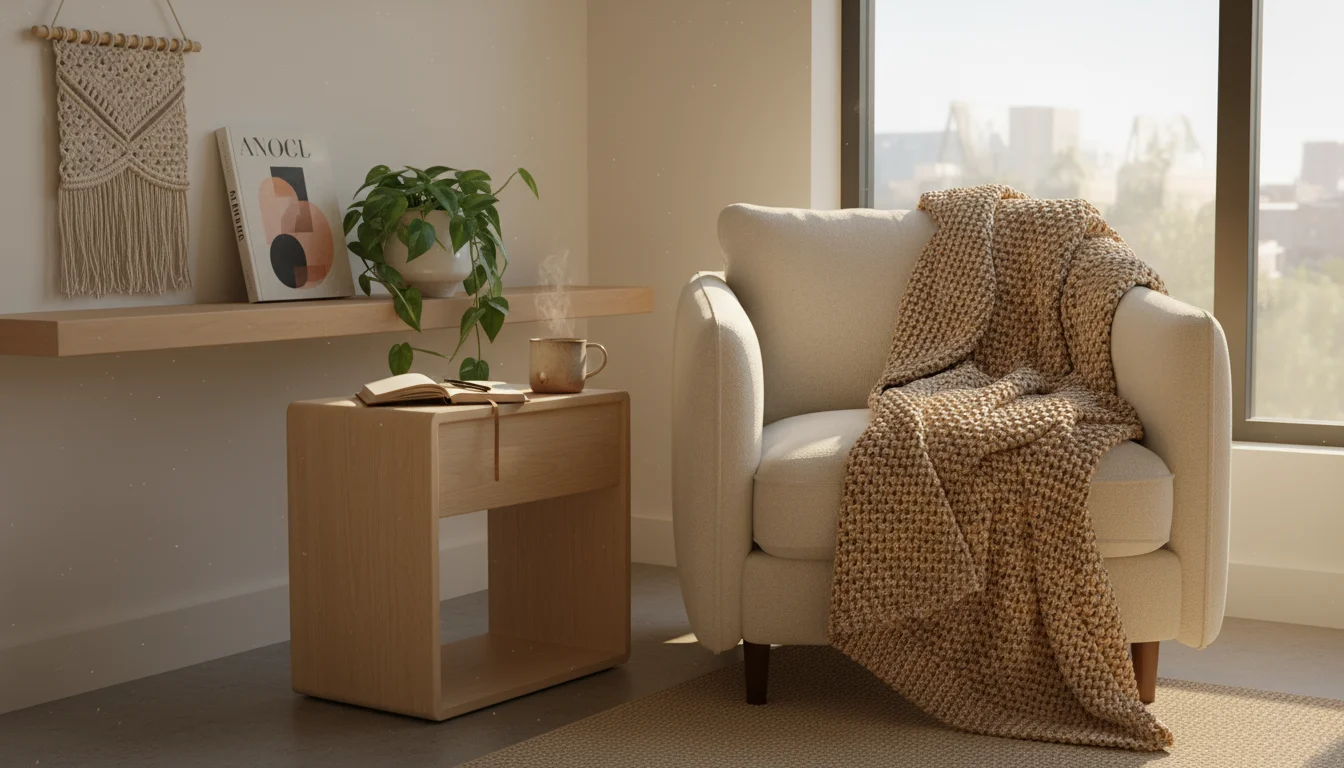
Embracing Your Studio: A Canvas of Opportunity
Picture this: a home where every item has a place, where each area serves a specific purpose, and where the overall feeling is one of calm and expansiveness, not clutter. This vision is entirely achievable in your studio apartment. The secret lies in approaching your space with intention. We are not simply reorganizing; we are curating an experience. You can transform your compact living area into a sanctuary that reflects your personality and supports your daily routines.
Small spaces inherently challenge us to be more mindful of our possessions and more creative with our design choices. This challenge becomes an opportunity to design with precision, selecting items for both their utility and their aesthetic appeal. You will discover that a well-designed studio offers a distinct advantage: everything you need is always within reach, and your home maintenance becomes simpler and faster.

Defining Your Zones: The Blueprint for Harmony
The first step in any successful studio apartment layout involves creating “zones.” Zones are designated areas within your single room, each dedicated to a specific activity or function. Think of it as creating invisible rooms within your larger room. This strategy brings order and purpose to your space, preventing your entire apartment from feeling like one undifferentiated area. You define where you sleep, where you eat, where you work, and where you relax.
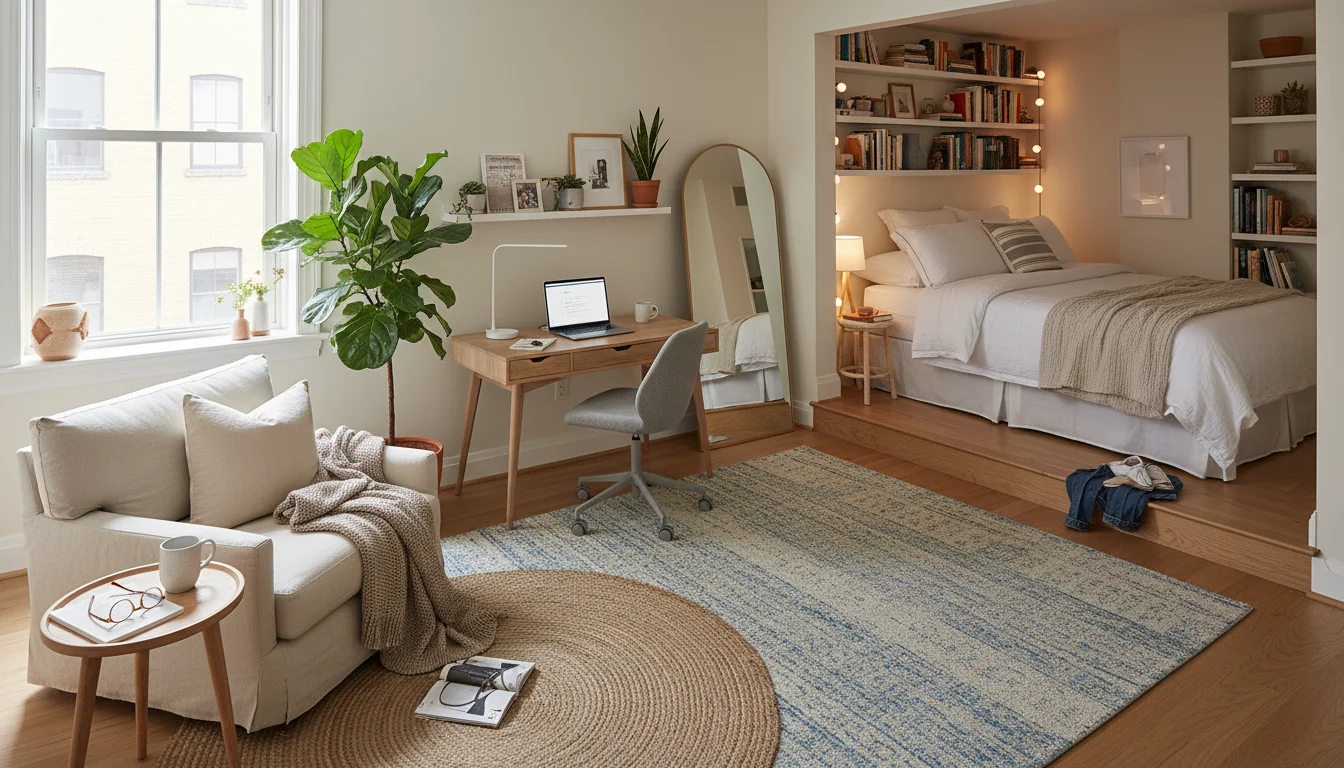
Why Zones Matter in a Studio Apartment
- Clarity of Purpose: Zones help you mentally compartmentalize your home. You know exactly where to go for a particular task, reducing visual and mental clutter.
- Enhanced Functionality: By dedicating specific areas, you ensure each activity has the appropriate setup. Your dining area, for instance, has a table and chairs, not just a sofa you eat on.
- Improved Flow: Thoughtfully planned zones create natural pathways and prevent obstacles, making your space feel more open and navigable.
- Visual Interest: Different zones introduce variety in furniture, lighting, and decor, breaking up the monotony of a single room.
To begin, consider your daily routine. Where do you eat, sleep, work, and unwind? Map these activities onto your floor plan. You might designate a corner for your bed, another for a desk, and the central area for lounging and dining. The key is to make these transitions feel natural and intuitive. For example, your sleeping zone might be separated from your living zone by a subtle `room divider idea`, such as a tall bookshelf.
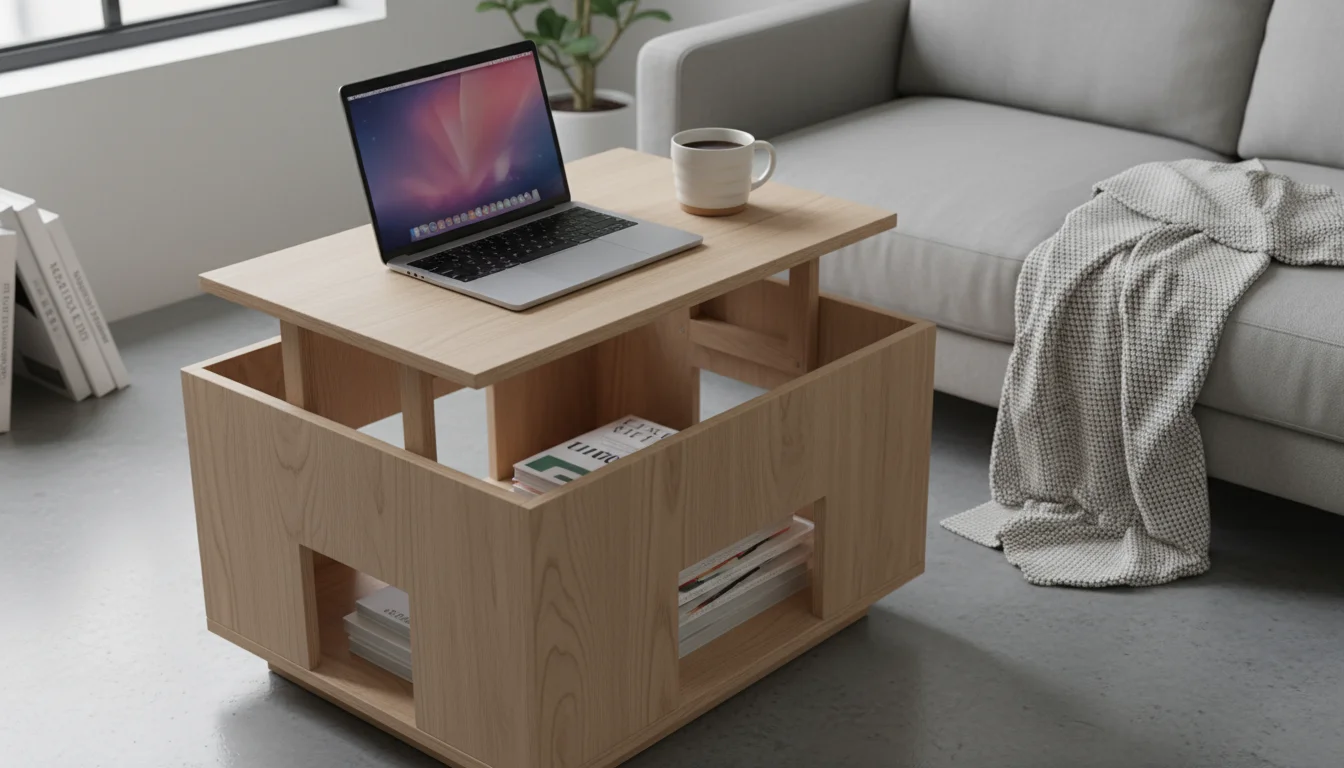
The Power of Multifunctional Furniture: Smart Choices, Big Impact
In a studio, every piece of furniture must earn its place. This is where `multifunctional furniture` becomes your best friend. These ingenious pieces serve multiple purposes, significantly reducing the number of items you need to fit into your compact space. They are high-impact, low-cost solutions that directly address the core challenge of `studio apartment layout tips`.
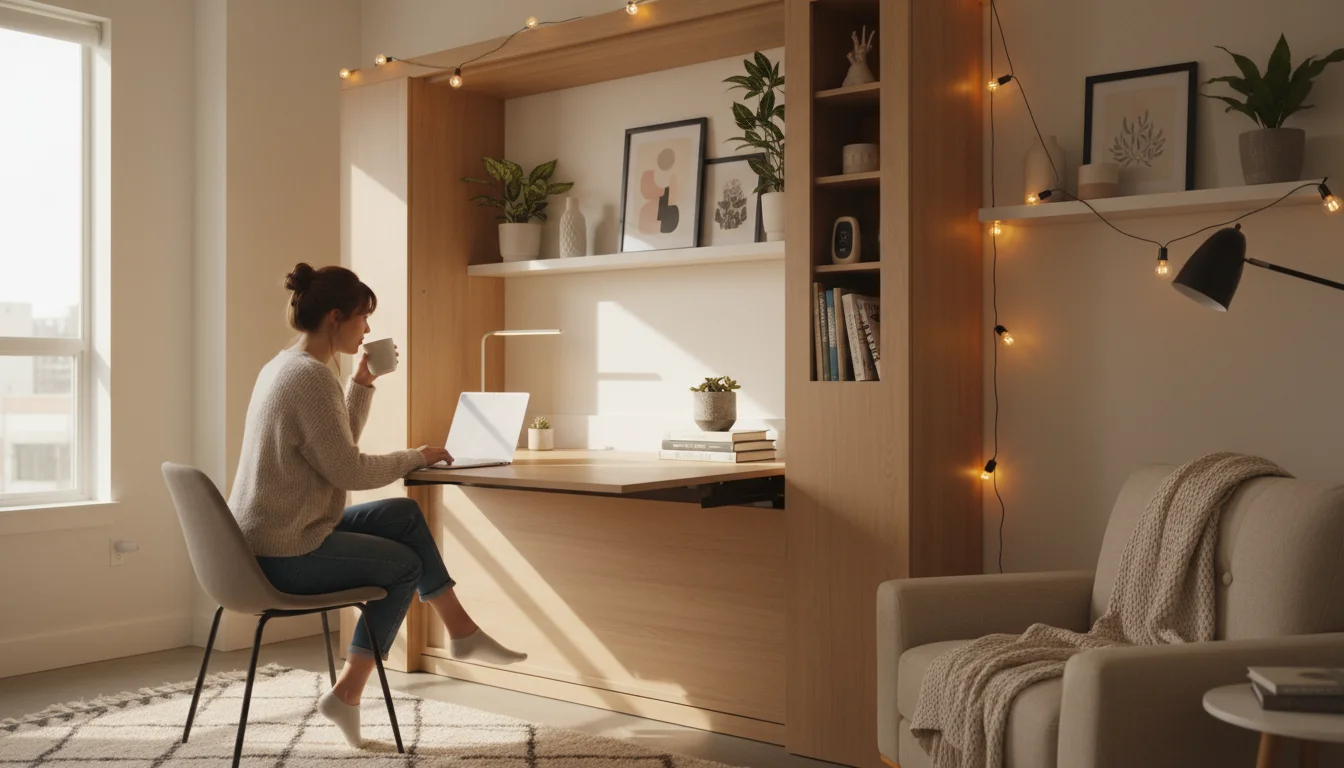
Essential Multifunctional Furniture Examples
- Murphy Bed Solutions: A `murphy bed solution` instantly transforms your bedroom into a living room. These beds fold vertically into a wall cabinet when not in use, freeing up significant floor space during the day. Modern designs often include integrated shelving, desks, or even sofas, offering even greater utility. Many retailers offer stylish, affordable options that can be installed professionally or as DIY projects.
- Sofa Beds and Futons: While not as space-saving as a Murphy bed, a good quality sofa bed provides comfortable seating by day and a guest bed by night. Look for models with clean lines and built-in storage.
- Ottomans with Storage: An ottoman can serve as extra seating, a footrest, a coffee table (with a tray), and a hidden storage bin for blankets, magazines, or remote controls.
- Compact Dining Tables: A `compact dining table` can unfold, extend, or even drop leaf to accommodate more people when needed, then fold down to a console table or tuck away against a wall. Many small bistro tables are perfect for one or two and can be pulled out for meals. Alternatively, consider a bar-height table with stools that can tuck underneath completely.
- Nesting Tables: These sets of tables fit neatly together, allowing you to pull out smaller tables when you need more surface area for drinks or snacks, then consolidate them when not in use.
- Storage Benches and Chests: Positioned near an entryway or at the foot of your bed, a storage bench provides seating while neatly stashing away shoes, bags, or extra linens.
When selecting `multifunctional furniture`, prioritize pieces that align with your daily needs and aesthetic. A sleek design that complements your decor will make your studio feel cohesive, not cluttered.

Creative Room Divider Ideas: Crafting Distinct Spaces
Creating visual separation between your zones is crucial for a well-organized studio. `Room divider ideas` offer both aesthetic appeal and practical benefits, helping you define areas without building permanent walls. They make your space feel larger by giving distinct areas their own identity.
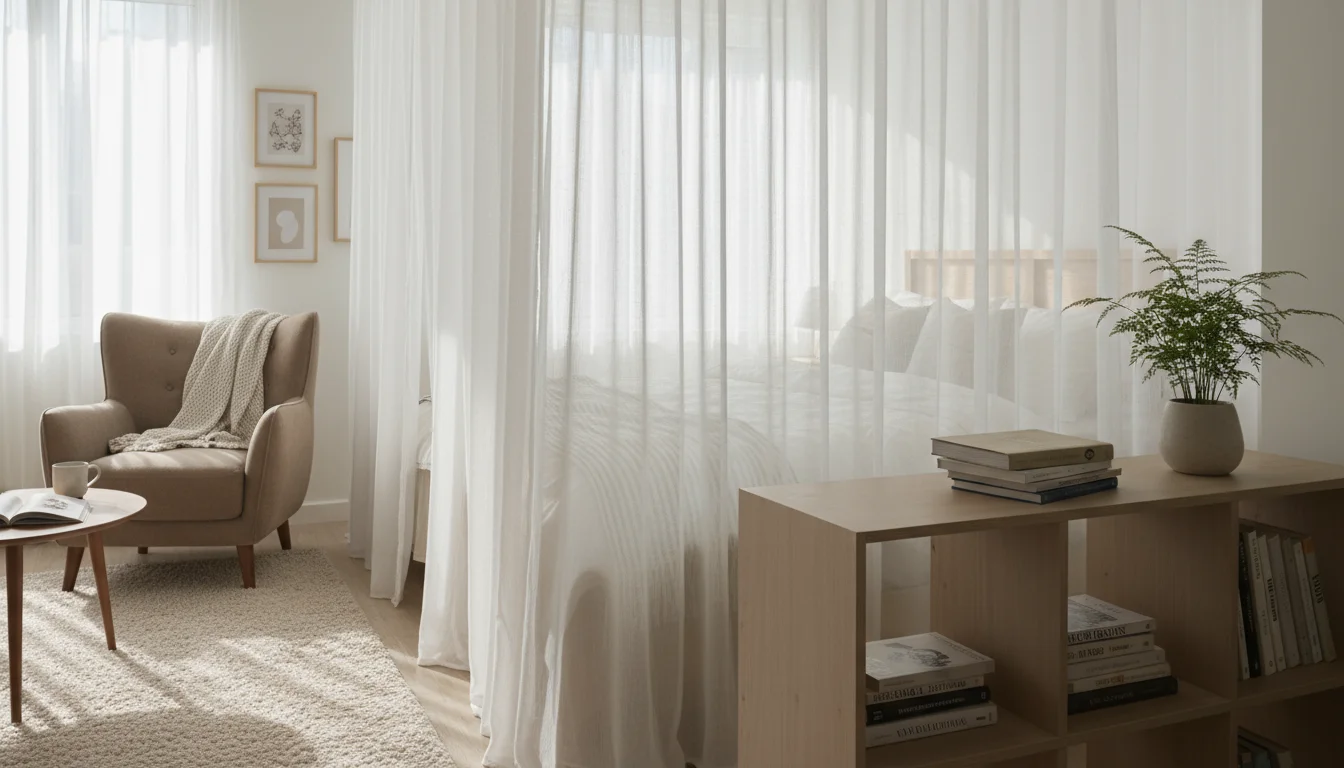
Effective Room Divider Strategies
- Open Shelving Units: A tall, open-backed bookshelf placed strategically can delineate your sleeping area from your living space. The open design allows light to pass through, maintaining an airy feel, while the shelves provide valuable storage and display opportunities. This is a classic solution because it provides both separation and utility.
- Curtains or Drapes: A ceiling-mounted track with floor-to-ceiling curtains offers a soft, flexible divider. You can pull them open during the day for an expansive feel and close them at night for privacy or to create a cozy bedroom nook. Choose a light-colored, sheer fabric for a bright, airy division, or a heavier material for more dramatic separation and sound dampening.
- Folding Screens: A beautiful folding screen offers a portable and versatile divider. You can easily move it to reconfigure your space or fold it away when not needed. Look for screens with interesting textures or patterns to add an artistic element to your decor.
- Half-Walls or Pony Walls: If you are able to make minor modifications, a short, non-structural wall can provide a sense of separation without completely blocking light or sightlines. You can even top it with a narrow shelf or use it as a console table.
- Furniture Placement: Sometimes, simply arranging your furniture intelligently can create natural dividers. Place the back of your sofa to face your bed, for example, to create a psychological barrier between the living and sleeping zones.
- Rugs: Area rugs are fantastic for visually anchoring zones. A large rug in your living area and a smaller, distinct rug in your sleeping zone instantly define those spaces on the floor.
The right divider enhances your `studio apartment layout tips` by adding a layer of visual interest and functionality. Consider how light flows and how much privacy you desire for each zone when making your choice.
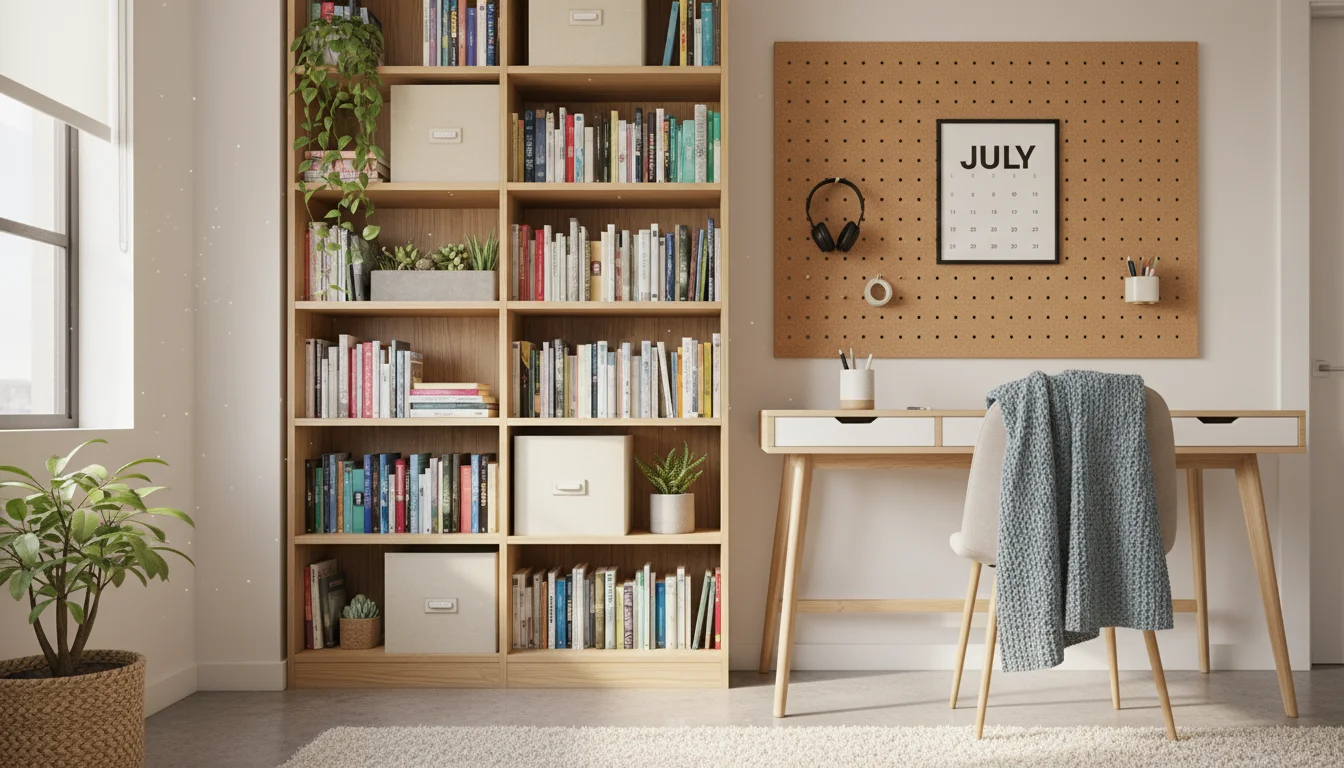
Mastering Vertical Space: The Sky’s the Limit
When horizontal space is limited, the only way to go is up! Utilizing your vertical space is one of the most impactful `studio apartment layout tips` for maximizing storage and display areas. Think of your walls as prime real estate waiting to be developed. High-impact, low-cost solutions abound.
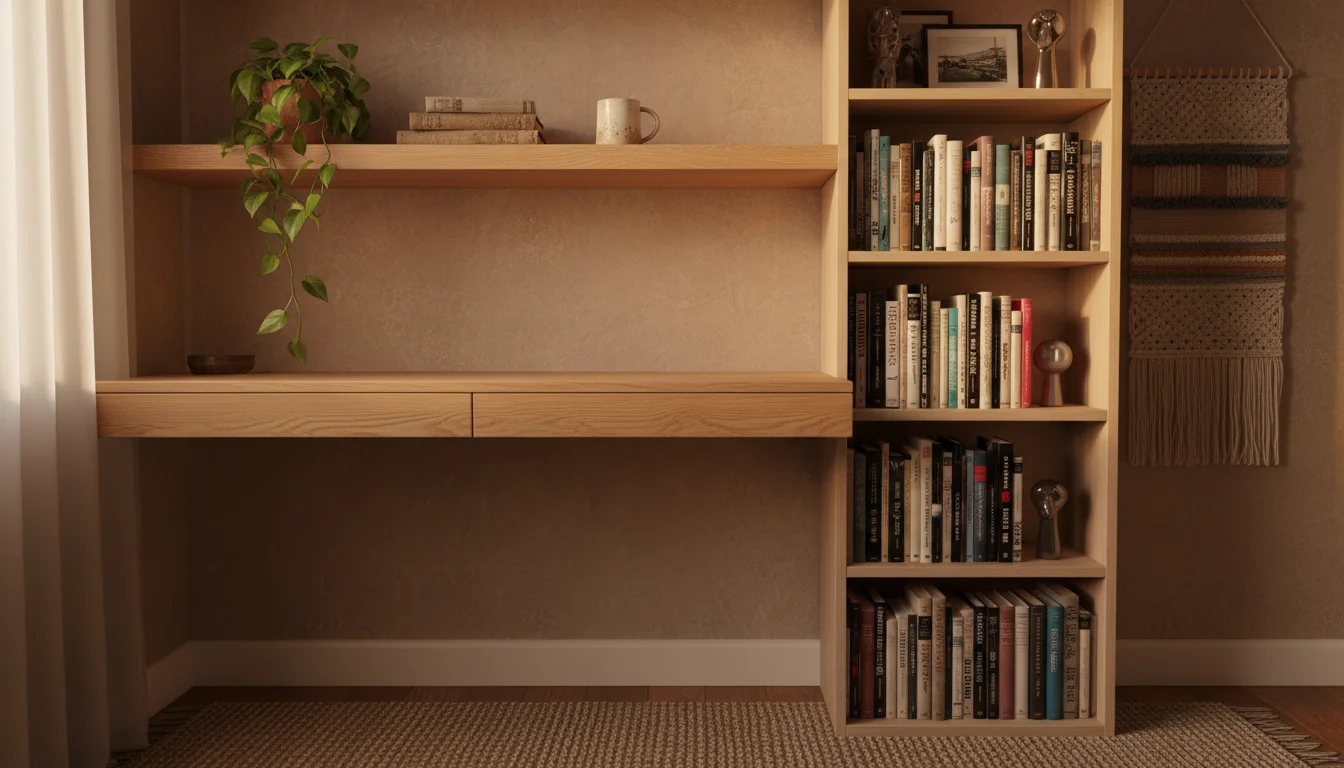
Strategies for Elevating Your Storage
- Wall-Mounted Shelving: Install shelves above your bed, over your desk, or along unused wall stretches. Floating shelves provide a clean, modern look, while modular systems offer flexibility. Use these shelves for books, decorative items, plants, or often-used essentials.
- Tall Bookshelves: Floor-to-ceiling bookshelves not only provide extensive storage but also act as a visual anchor and can even serve as a subtle `room divider idea`. Ensure they are properly anchored to the wall for safety.
- Over-the-Door Organizers: The back of your entry door or closet door offers surprising storage potential. Use over-the-door shoe organizers, hooks for coats and bags, or caddies for cleaning supplies.
- Wall-Mounted Desks and Tables: For a dedicated workspace or dining spot, consider a desk or table that folds down from the wall. This instantly creates a functional surface that disappears when not in use, maximizing your floor space.
- Pegboards: A pegboard system offers incredible versatility for organizing tools, craft supplies, kitchen utensils, or even jewelry. You can customize it with hooks, shelves, and baskets to suit your needs.
- Hanging Storage: Employ hanging planters for greenery, or hanging clothes organizers inside your closet. In the kitchen, a pot rack frees up cabinet space and adds a stylish touch.
Every unused wall offers an opportunity. By consciously looking up, you unlock significant storage potential, helping you keep surfaces clear and your studio feeling spacious.
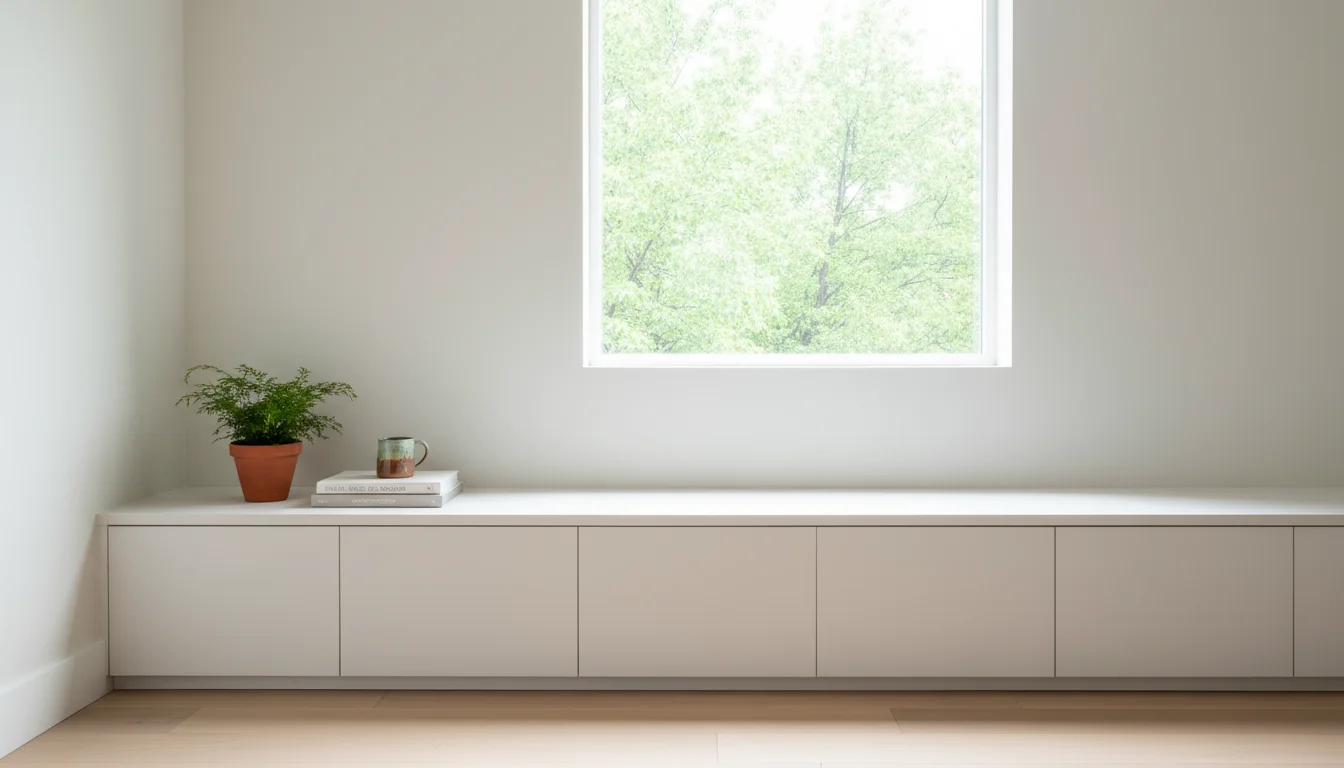
Clever Storage Strategies: Every Inch Maximized
Beyond `multifunctional furniture` and vertical solutions, integrating clever storage throughout your studio ensures every inch works for you. The goal is to create seamless storage that blends into your decor, keeping clutter out of sight and maintaining an organized aesthetic.
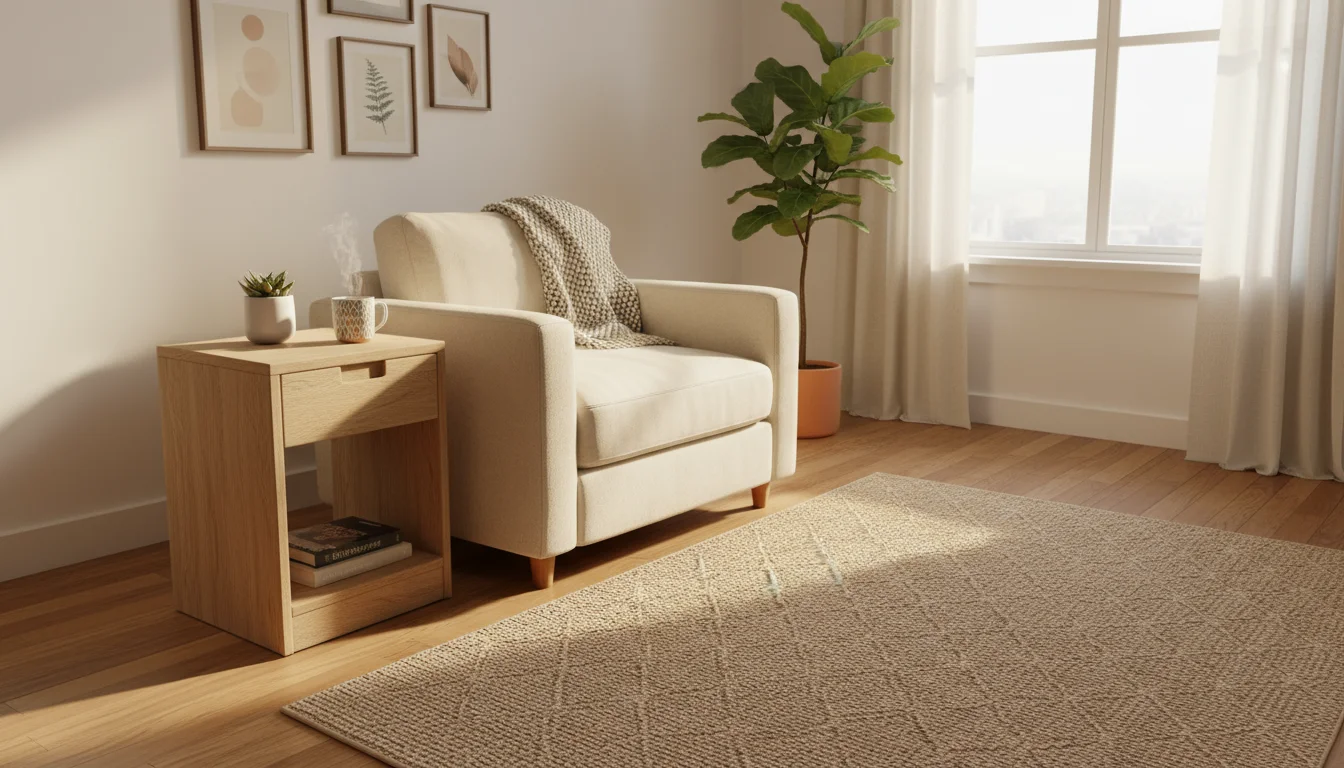
Smart Storage Solutions for Every Nook
- Under-Bed Storage: The space beneath your bed is a treasure trove of hidden storage. Use rolling bins, flat containers, or drawers designed to slide out easily. This area is perfect for seasonal clothing, extra bedding, or items you do not access daily.
- Furniture with Built-in Storage: Beyond Murphy beds and storage ottomans, look for coffee tables with drawers or lift-tops, end tables with shelves, or benches with hinged lids. These pieces subtly integrate storage into your main living areas.
- Cabinet Organizers: Maximize the space inside your existing cabinets with risers, pull-out shelves, and drawer dividers. This prevents items from getting lost in the back and makes everything more accessible.
- Command Hooks and Adhesive Strips: These versatile tools allow you to hang lightweight items on walls, inside cabinet doors, or on the back of furniture without damaging surfaces. Use them for keys, towels, charging cables, or small kitchen tools.
- Drawer Organizers: Inside your desk or dresser drawers, use dividers and small bins to categorize items. This simple step prevents your drawers from becoming “junk drawers” and ensures you can find what you need quickly.
- Decorative Baskets and Bins: Use attractive baskets and bins on shelves, under tables, or tucked into corners to corral items like magazines, toys, or craft supplies. Choosing containers that match your decor makes them functional and stylish.
The mantra for studio living is “a place for everything, and everything in its place.” Thoughtful storage solutions make this a reality, contributing significantly to your overall well-being in your home. You can find many inspiring ideas and products for efficient storage by visiting sites like Apartment Therapy, a great resource for small-space living.
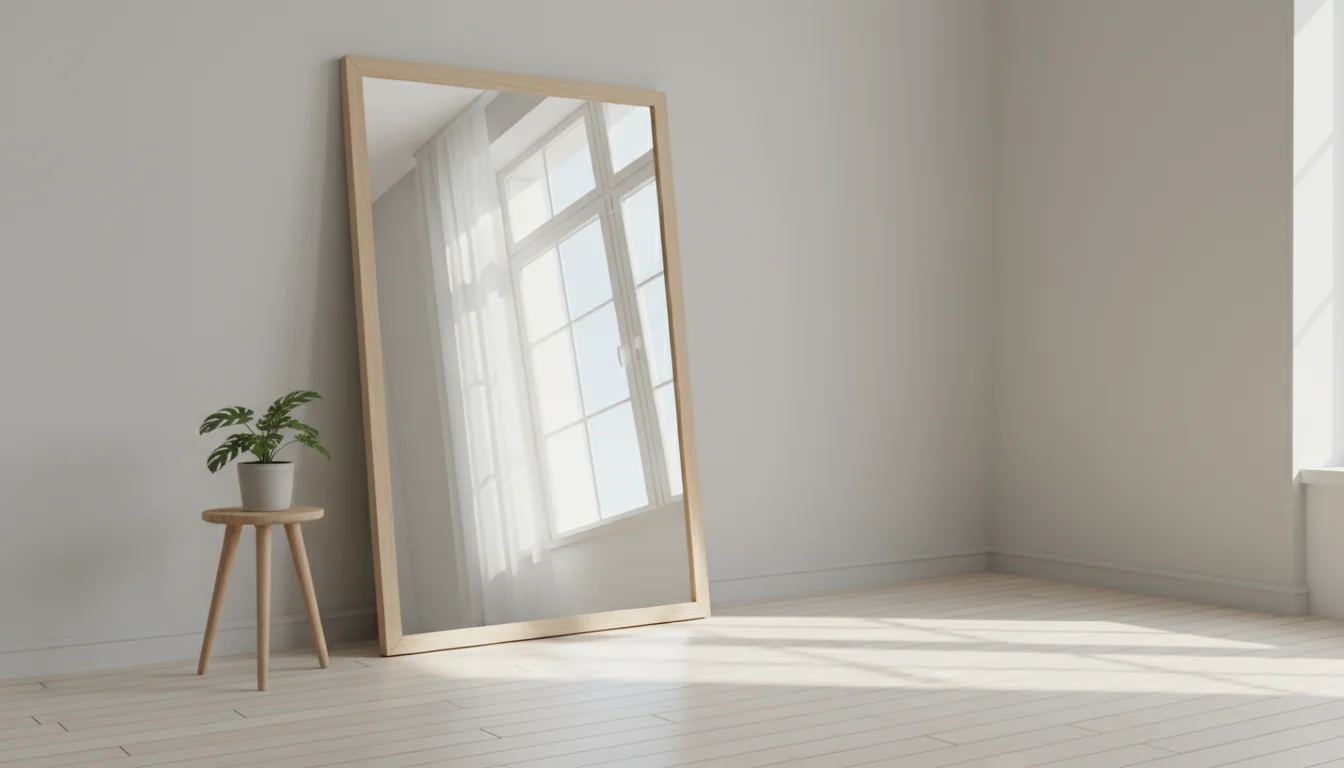
Visual Illusions: Light, Mirrors, and Color for Perceived Space
Beyond physical organization, you can make your studio feel larger and more open through clever visual tricks. These design choices are high-impact and often low-cost, transforming the atmosphere of your space without adding a single physical item.
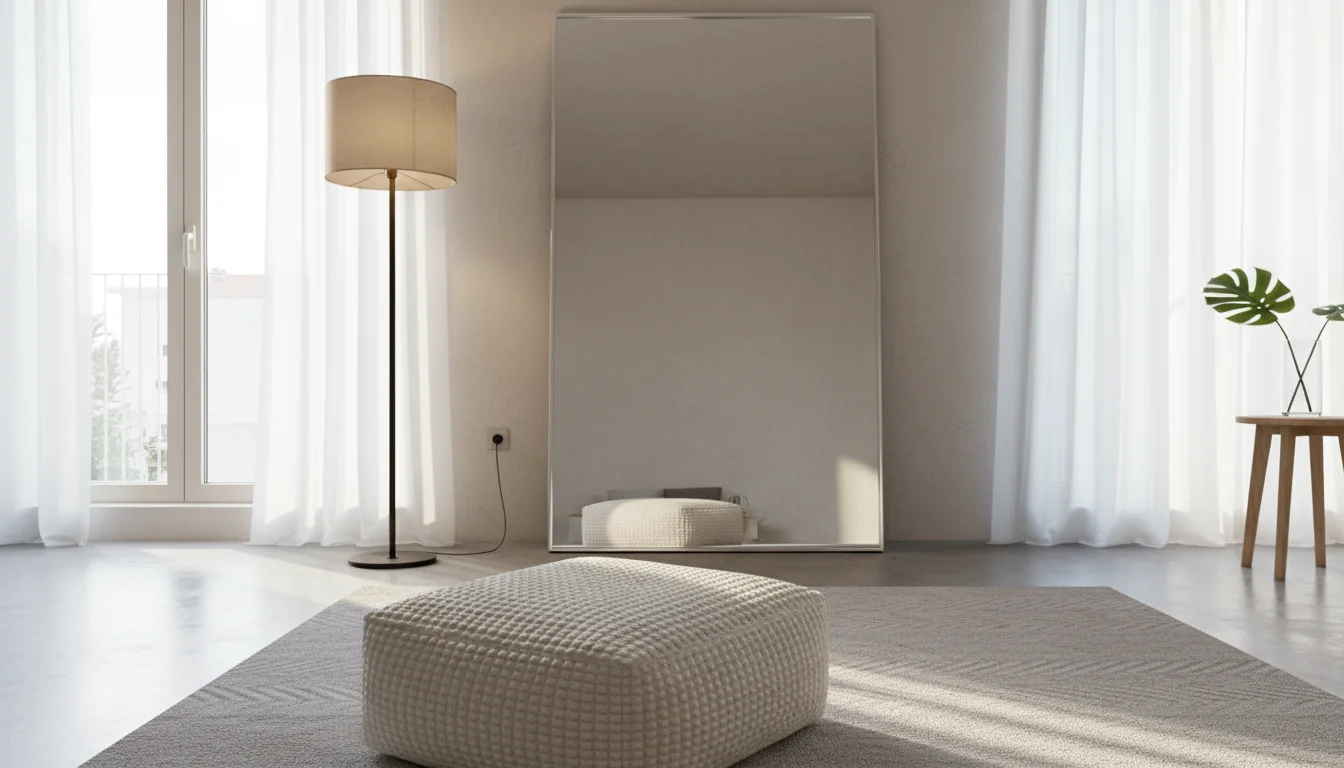
Playing with Perception
- Strategic Mirror Placement: Mirrors are perhaps the most powerful tool for expanding a small space. A large mirror placed strategically opposite a window reflects natural light, making the room feel brighter and doubling its perceived size. You can also use multiple smaller mirrors to create a gallery wall that adds dimension.
- Optimal Lighting: Good lighting is essential. Rely on multiple light sources rather than a single overhead fixture. Use floor lamps, table lamps, and wall sconces to create layers of light. Dimmers allow you to adjust the ambiance. Natural light is your best friend, so keep window treatments light and airy, avoiding heavy, dark drapes.
- Light Color Palettes: Lighter paint colors for walls and ceilings make a room feel more open and expansive. Whites, light grays, pale blues, and soft greens reflect light, pushing the walls outward. You can still incorporate color through accents, textiles, and art.
- Monochromatic Schemes: Using varying shades of a single color creates a cohesive and seamless look, minimizing visual breaks that can make a small space feel choppy.
- Leggy Furniture: Choose furniture pieces with visible legs rather than solid bases. The ability to see the floor beneath furniture creates an illusion of more open space.
- Clear or Acrylic Furniture: A clear acrylic coffee table or dining chairs visually disappear into the room, maintaining functionality without adding visual weight.
- Minimalist Decor: Less truly is more in a studio. Curate your decor, choosing a few impactful pieces rather than many small ones. A decluttered space always feels larger.
By consciously employing these visual illusions, you can significantly enhance the sense of spaciousness and tranquility in your studio, creating an inviting atmosphere that belies its actual size.

Personal Touches: Infusing Style into Your Compact Home
Your studio should feel like authentically *your* home. While organization is paramount, integrating your personality through thoughtful decor is equally important. The challenge lies in doing so without introducing clutter. This is where you layer concepts: start with a functional base, add decorative elements, and finish with personal touches.
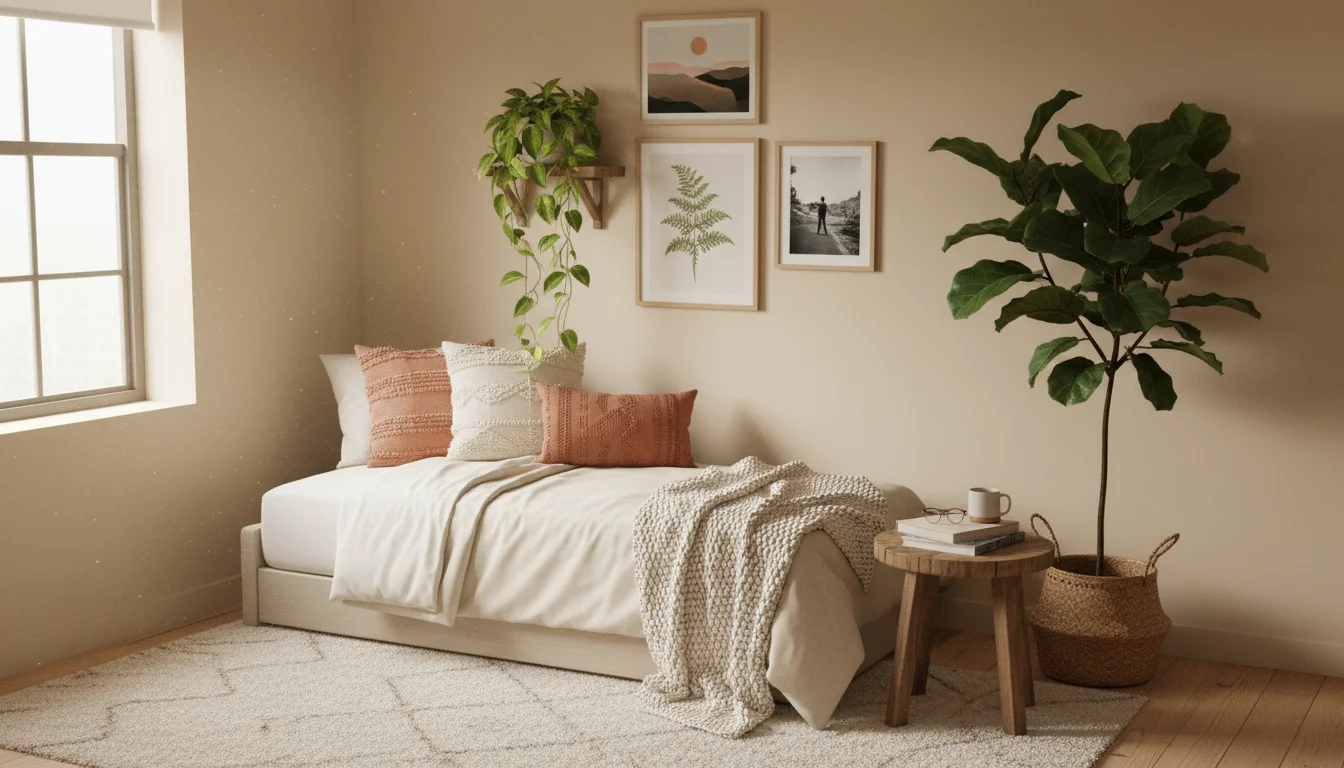
Styling Your Studio with Intention
- Curated Art and Photography: Choose a few significant pieces of art or photographs that resonate with you. A large piece can make a bold statement, while a carefully arranged gallery wall on a single wall adds depth without overwhelming the space.
- Textiles and Texture: Introduce warmth and personality through pillows, throws, rugs, and curtains. These elements add softness, color, and pattern. A plush rug defines a zone, while decorative pillows instantly update your sofa or bed.
- Greenery: Houseplants bring life and freshness into any space. Choose plants that fit your lighting conditions and available space. Trailing plants on high shelves or a small floor plant in a corner add a natural touch.
- Personal Collections: If you collect items, display them intentionally. Group similar items together on a shelf or tray to create a curated vignette rather than scattering them throughout the room. Edit ruthlessly, keeping only the pieces that bring you genuine joy.
- Thoughtful Color Accents: Use accent colors in small doses—a vibrant throw, a colorful vase, or a unique piece of art. These pops of color add visual interest without making the space feel busy.
- Scent and Sound: Do not overlook the power of sensory details. A pleasant room scent from a diffuser or candle, and a curated playlist, contribute significantly to the overall comfort and feeling of your home.
Remember, your studio is a reflection of you. By carefully selecting pieces that are both functional and beautiful, you create a cohesive and stylish environment that feels genuinely yours, not just a storage unit.
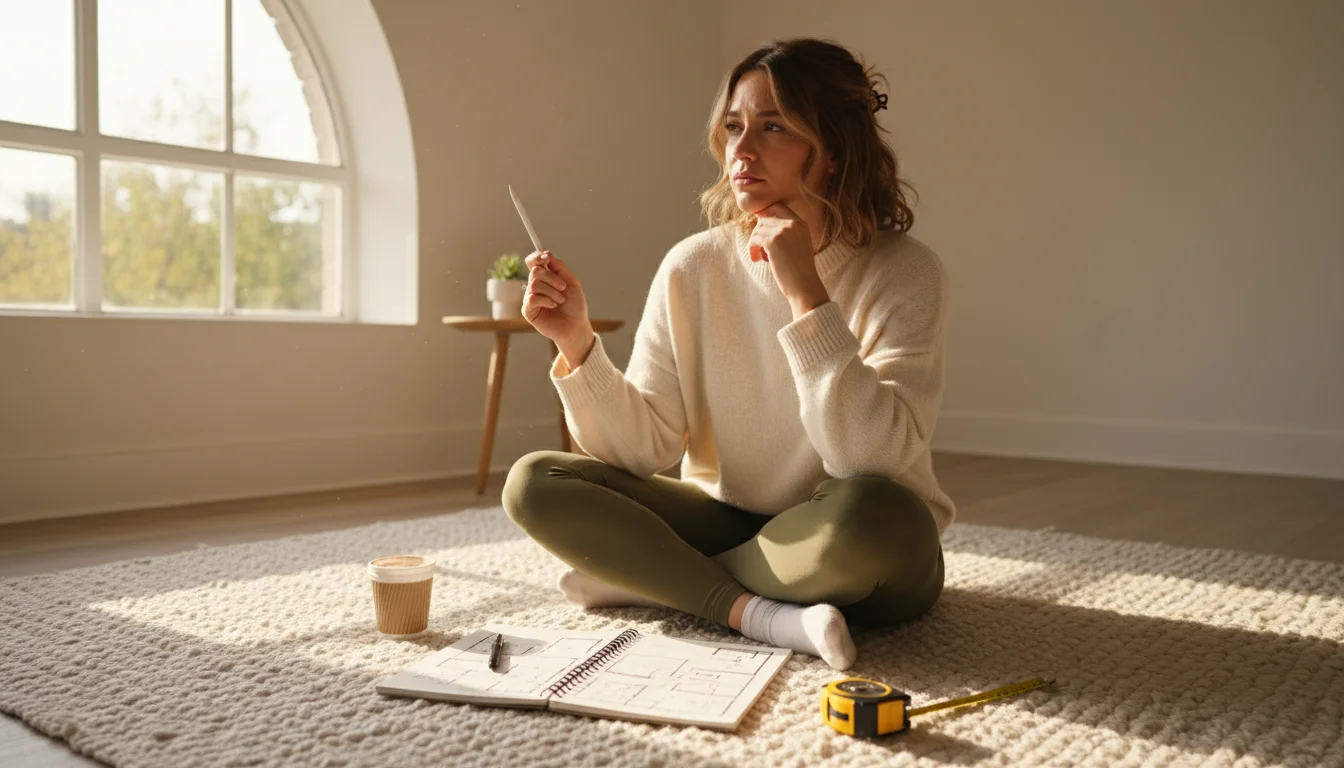
Your Studio Apartment Layout Action Plan: Bringing It All Together
Ready to transform your studio? Here is a step-by-step action plan to guide you through the process, combining all the `studio apartment layout tips` we have discussed. This methodical approach ensures you achieve high impact with low stress.
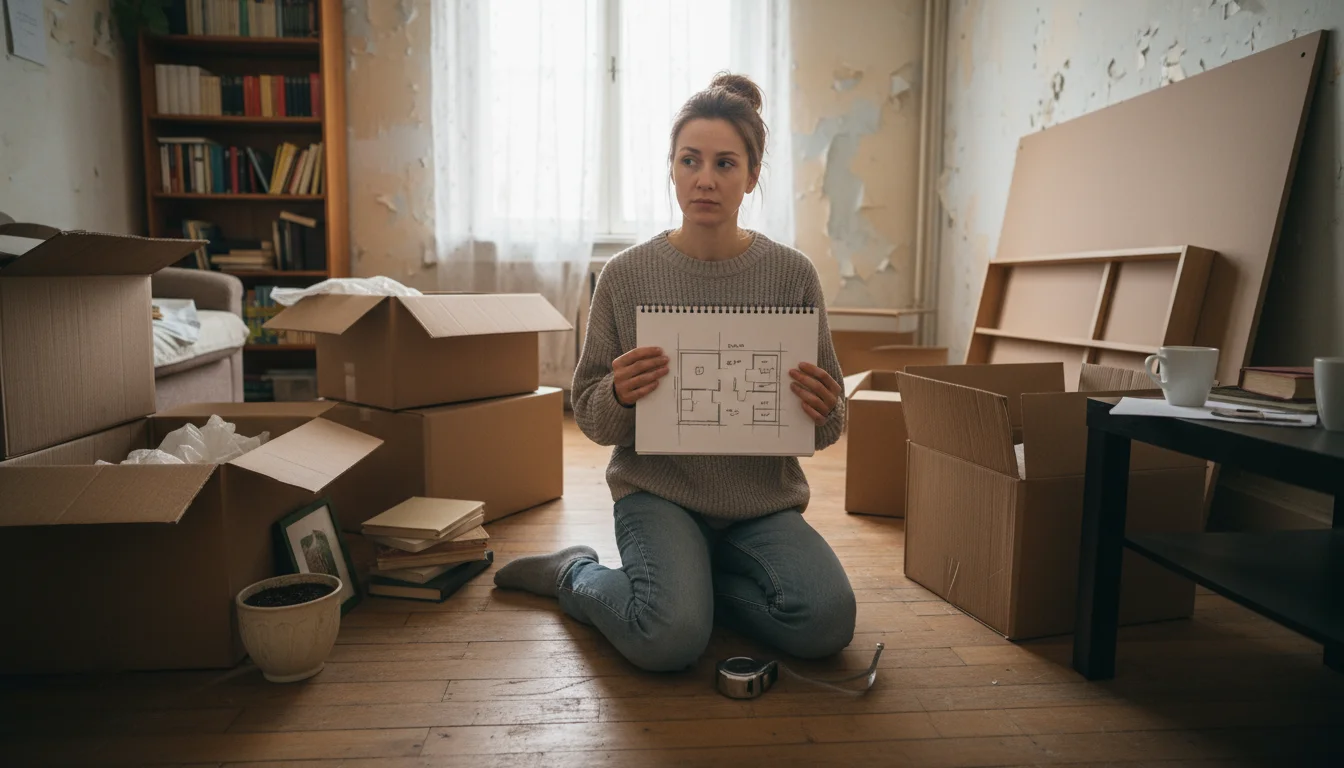
Step-by-Step Studio Layout Transformation
- Declutter First: Before moving anything, ruthlessly declutter. Get rid of anything you no longer use, love, or need. Less stuff means more space and easier organization. Aim for a clean slate.
- Measure and Sketch: Measure your studio apartment’s dimensions. Create a simple floor plan, marking windows, doors, and outlets. This visual aid is crucial for planning your zones and furniture placement.
- Define Your Zones: On your sketched floor plan, clearly mark your desired zones: sleeping, living, dining, and workspace. Consider the natural light and flow of traffic.
- Strategize Furniture Placement:
- Start with your largest piece: the bed. Determine its best location, considering privacy and window access.
- Integrate `multifunctional furniture`. Can your sofa double as a guest bed? Can your `compact dining table` fold away?
- Position your sofa or main seating to define the living zone.
- Place your desk or workspace in an area with good light, ideally away from the sleeping zone for mental separation.
- Implement Room Dividers: Once major furniture is placed, add your chosen `room divider ideas` to create visual separation between zones. Test different placements for bookshelves or curtain tracks.
- Maximize Vertical Space: Look at your walls. Where can you add shelves, wall-mounted desks, or hooks? Install these to free up floor and surface space.
- Integrate Clever Storage: Add under-bed storage, use storage ottomans, and organize drawers and cabinets. Ensure every item has a designated home.
- Enhance with Visual Illusions: Hang mirrors, adjust lighting, and choose textile colors to amplify the sense of space.
- Personalize and Style: Finally, add your personal touches – art, plants, and decorative accents – ensuring they enhance the space without creating clutter.
Taking this structured approach ensures you build a functional, stylish, and comfortable studio that genuinely works for your lifestyle.
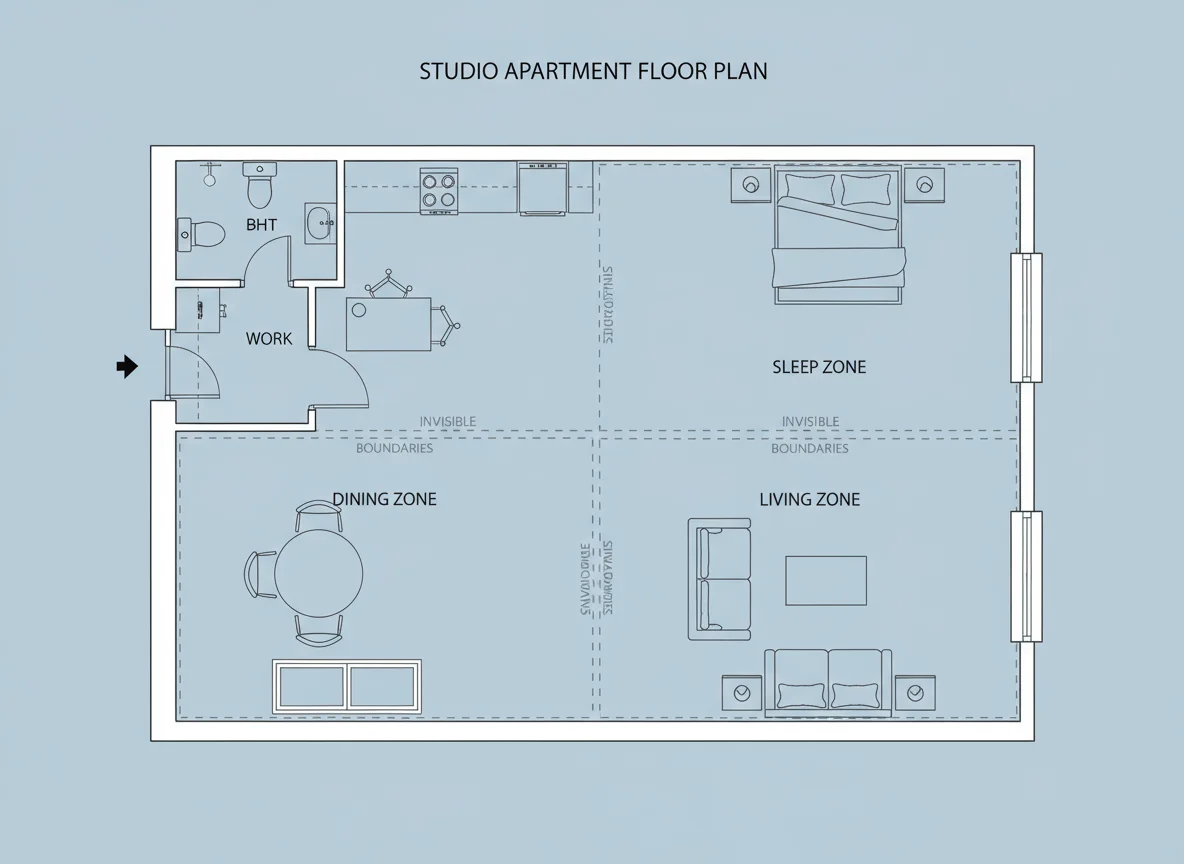
Your action plan gives you a clear roadmap. Remember to take it one step at a time. Do not feel overwhelmed; even small changes can make a big difference in how your studio feels.
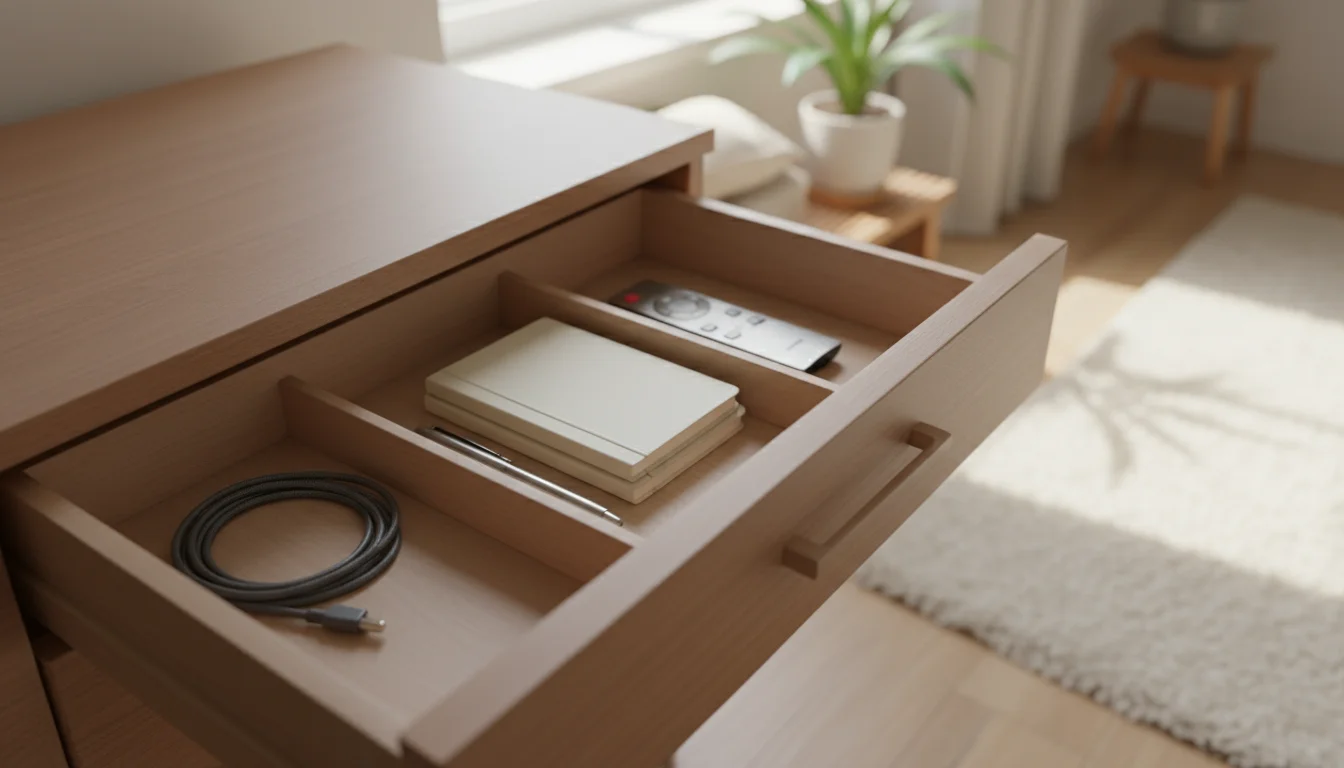
Frequently Asked Questions
What is the most important thing to consider when laying out a studio apartment?
The most important consideration is defining distinct zones for different activities. By clearly separating your sleeping, living, dining, and working areas, you create order and purpose within your single room, making the space feel larger and more functional. This zoning prevents your entire apartment from feeling like one undifferentiated, cluttered area.
How can I make my studio apartment feel more private?
You can enhance privacy by using `room divider ideas` such as ceiling-mounted curtains, tall open bookshelves, or folding screens to visually separate your sleeping area from the rest of the space. Strategic furniture placement, like using the back of a sofa to create a barrier, also adds a sense of privacy without permanent construction.
Are Murphy beds worth the investment for a studio apartment?
Yes, `murphy bed solutions` offer significant value in a studio apartment. They free up a large amount of floor space during the day, transforming your bedroom into a living or work area. While the initial investment can be higher than a traditional bed, the increased functionality and feeling of openness often justify the cost, especially in high-rent areas where space is at a premium.
What type of furniture should I prioritize for a small studio budget?
Prioritize `multifunctional furniture` that offers both utility and storage. Examples include storage ottomans, sofa beds, nesting tables, and compact dining tables that can be folded or extended. Look for pieces that serve at least two functions, allowing you to maximize usability without needing to buy many separate items, which helps keep costs down.
How can I add personality to my studio without making it feel cluttered?
Focus on intentional, curated decor. Choose a few impactful pieces of art, introduce warmth with textured textiles like pillows and throws, and incorporate houseplants. Group personal collections on trays or shelves to create vignettes rather than scattering them. Select items for both their beauty and their ability to enhance your space without adding visual noise.

Leave a Reply